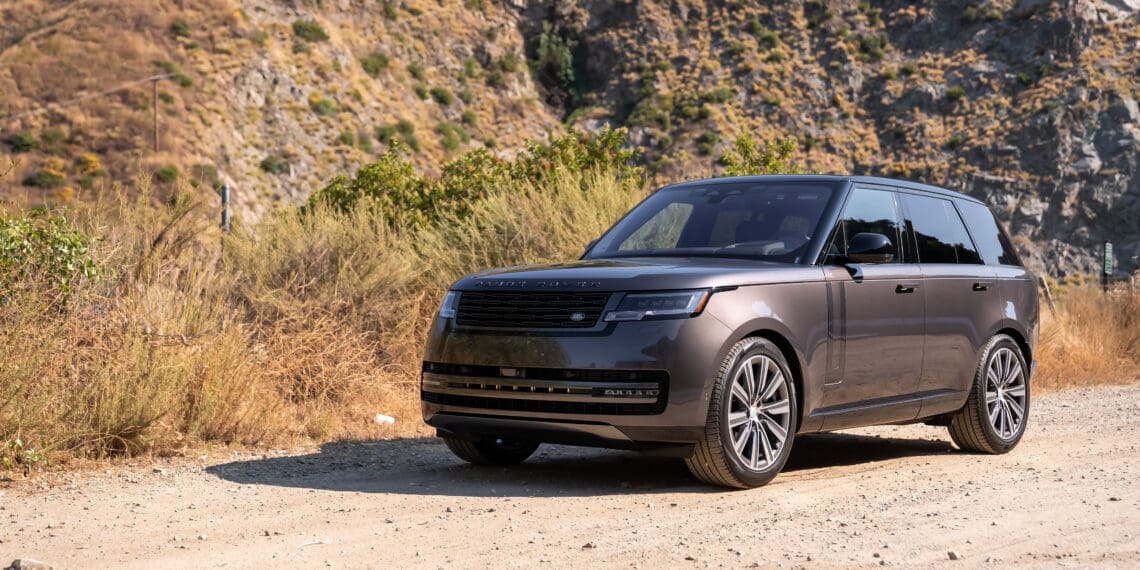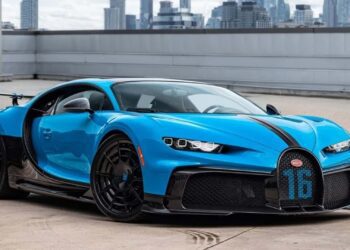We expect more from a Range Rover than almost any other six-figure SUV. Land Rover’s flagship doesn’t just have to be a luxuriously appointed and cushy cruiser. It must also serve as a formidable off-roader, even though most will never roll over anything other than asphalt.
Building a great Range Rover then requires an engineering balancing act, incrementally increasing its capabilities on one end without detracting from its abilities on another. The British carmaker has done an excellent job of just that over the last decades, steadily building a dedicated fanbase of repeat buyers.
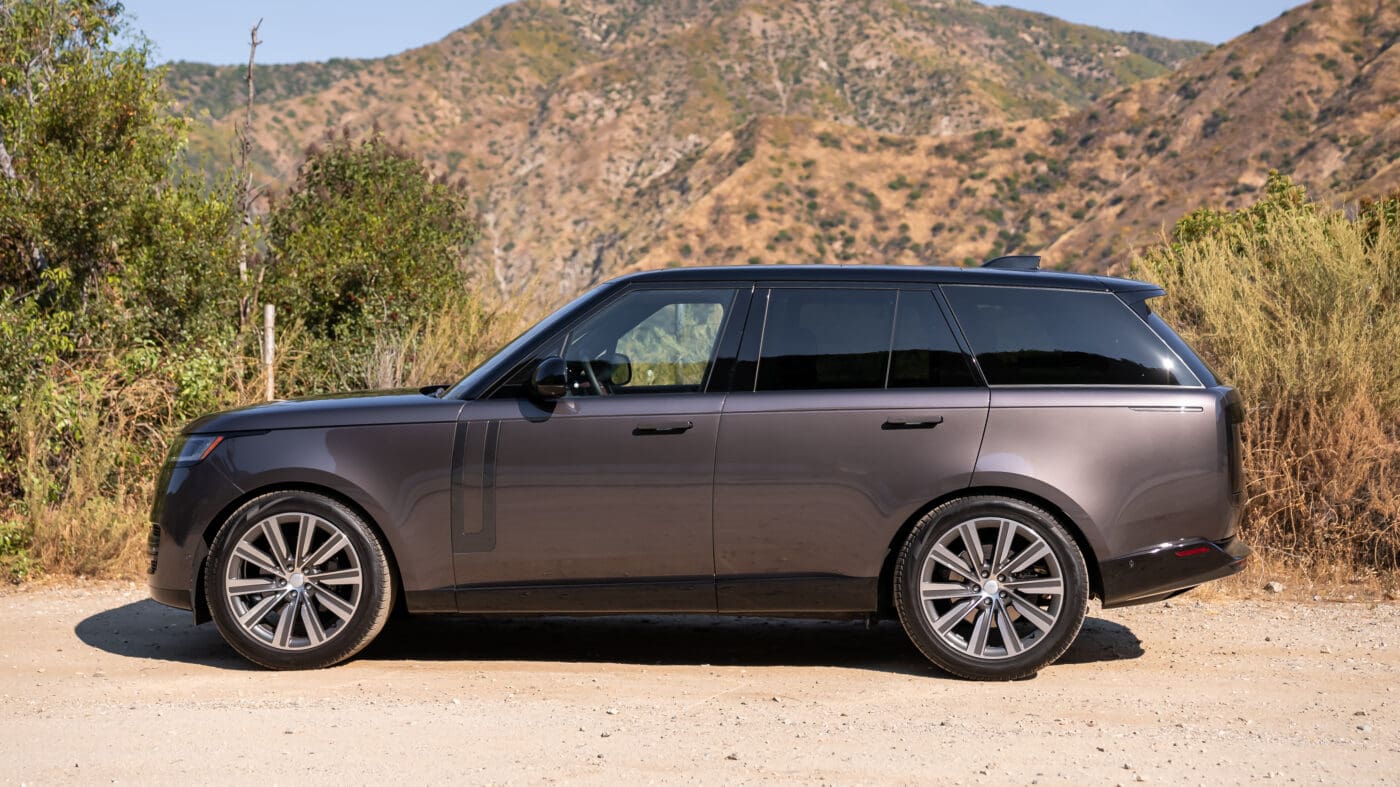
With one notable change, this latest 2023 Range Rover P400 SE successfully walks the same fine line as its predecessor. Although it’s still comfortable on the road and capable off it, this large SUV is now more luxurious than ever. From its build quality to its interior material choice and how well it integrates new technologies, this latest fifth-gen car doesn’t redefine what a Range Rover is, instead focusing on making it better than ever in almost every aspect.
A Familiar Face With Fresh Bones
Although this latest L460 generation Range Rover carries a similar exterior aesthetic to the L405 that preceded it, it rides on Land Rover’s new Modular Longitudinal Architecture, or MLA-Flex for short. The adoption of a new structure makes this latest model up to 50 percent stiffer than its predecessor while improving sound isolation by up to 24 percent.
The L460 is available in varying configurations, including the standard wheelbase, long wheelbase, or an extended seven-seater variant. The version I’ve been testing over the last week is the standard length P400 SE with seating for five, or about as enough space as most buyers will ever need. And despite technically being the smallest version available, it boasts excellent cabin space in the first and second rows, ample head, shoulder, and leg room, and a sizable cargo holdout back.
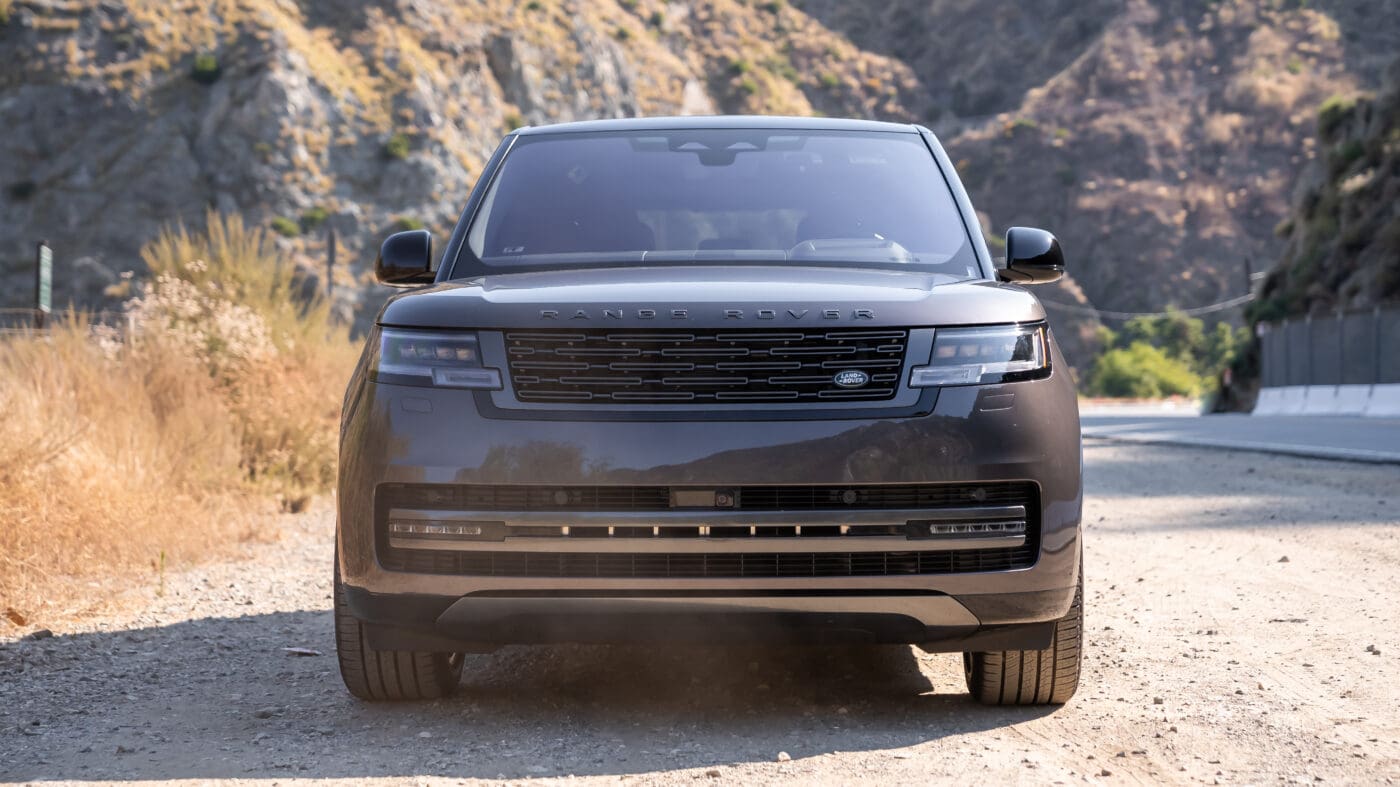
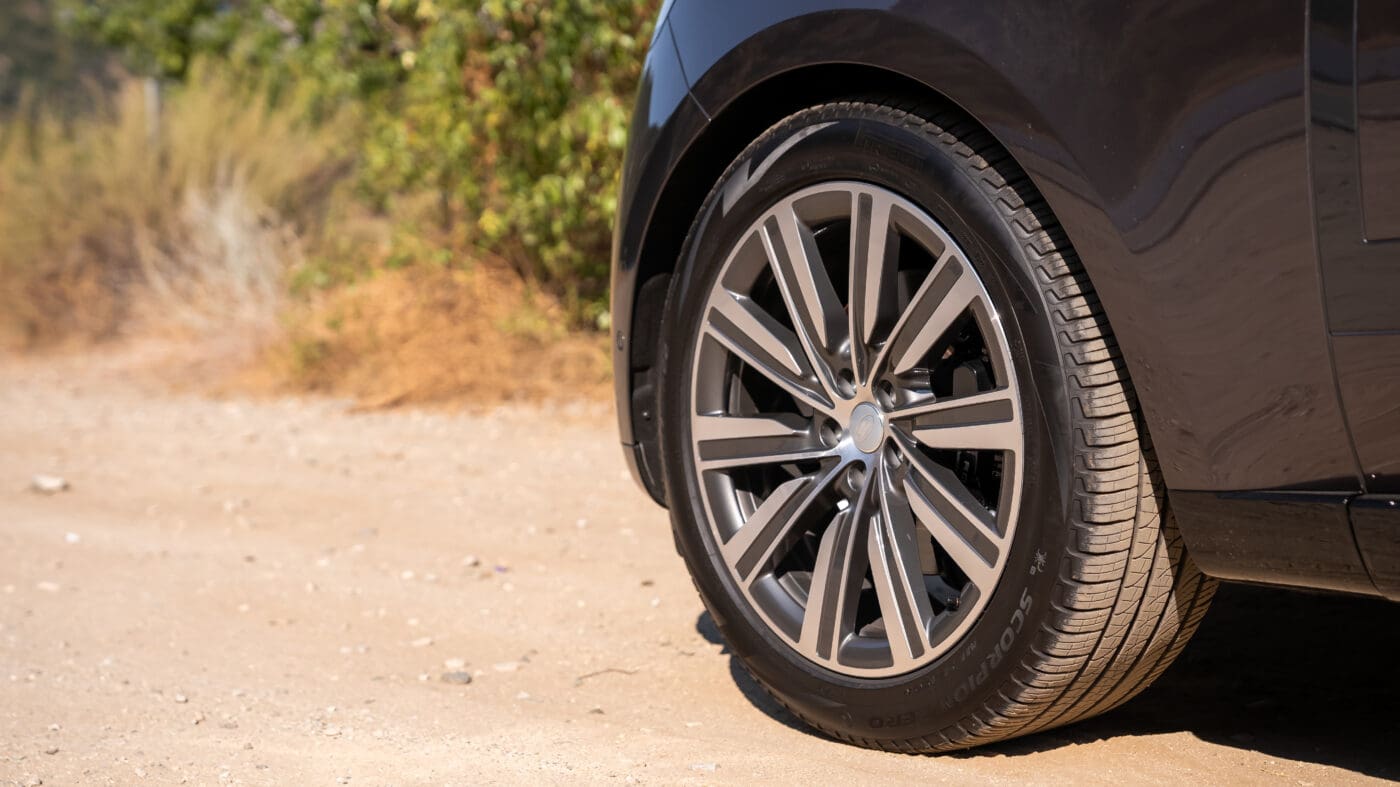
It can be hard to tell you’re looking at the fifth-gen at a glance. Rather than adopting a redesigned exterior, Land Rover opted to sharpen the elements introduced in the outgoing model with more streamlined bodywork and slimmer lighting elements. The result is an SUV that looks more elegant than ever, in line with its upmarket push, but more on that later.
Land Rover made the right decision to keep the Range Rover’s aesthetic intact. Like a Mercedes-Benz G-Class, this flagship has also built a distinctive, recognizable look. It may not be immediately obvious which generation you’re looking at, but you’ll always know you’re looking at a Range Rover.
Aside from refining its exterior details, Land Rover has vastly extended its available options list by introducing higher trim levels, such as the range-topping SV, further flexing its coach-building prowess with high-dollar special editions like the $345,000 Carmel Edition presented back in August.
The L460 isn’t just targeting its usual rivals at the low six-figure price point. Instead, it’s gearing up to snap a piece of the ultra-luxury SUV segment Bentley and Rolls-Royce have split amongst themselves.
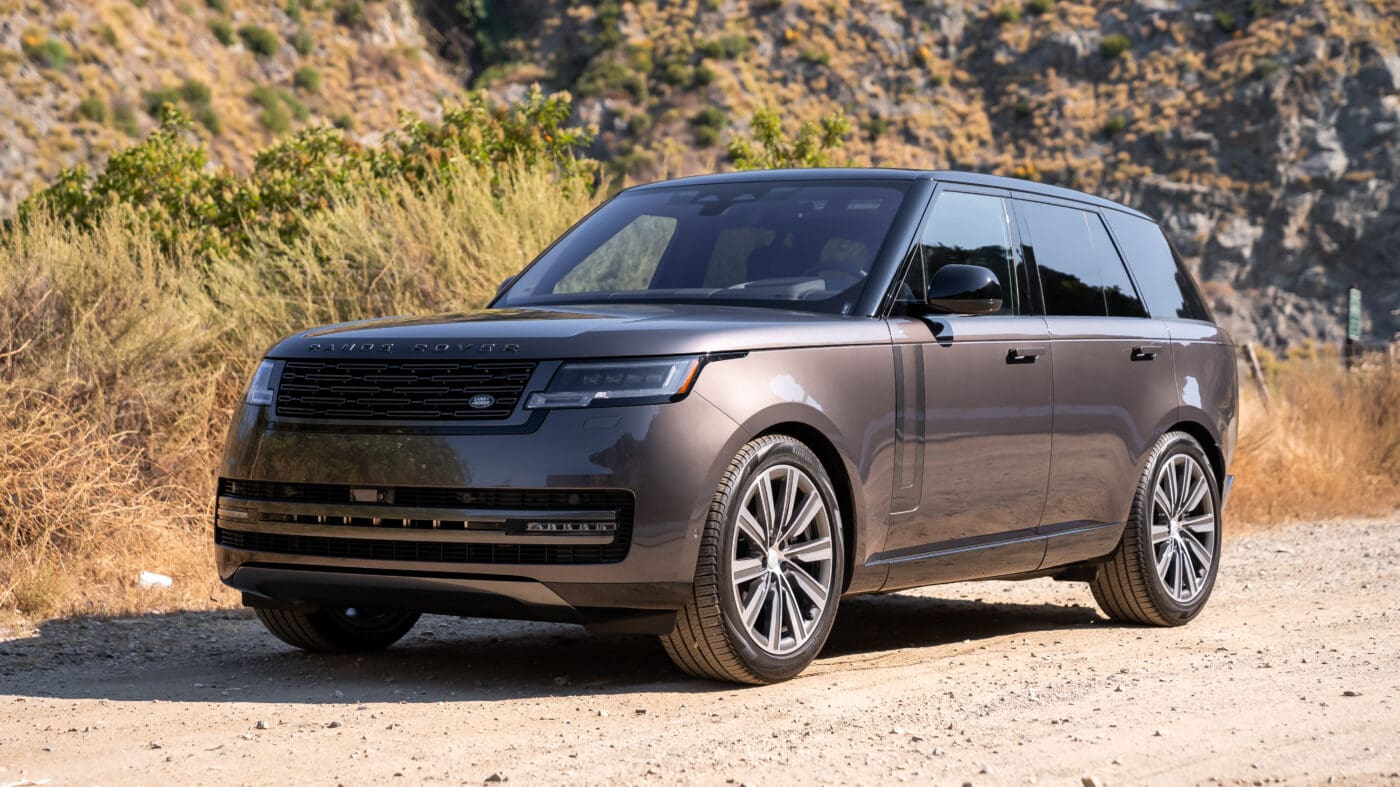
More Options To Come
Complementing its ever-growing options list, the Range Rover is set to offer more powertrain options than ever, although two have yet to be released. The first is a fully electric variant, which is expected to debut towards the end of this year, alongside a plug-in hybrid variant. The latter will combine JLR’s well-known 3.0-liter inline-six with an electric motor and 38.2-kilowatt-hour battery pack. This setup will allow cruising up to 87 mph with the gas engine turned off. Its EPA-estimated electric range is around 50 miles.
The current flagship engine is a BMW-sourced 4.4-liter twin-turbocharged V8 with an impressive 523 horsepower and 553-foot-pound output. I spent a week with it in the Range Rover Sport earlier in the year and found it a suitable replacement for the outgoing supercharged 5.0-liter V8 despite its subdued engine note.
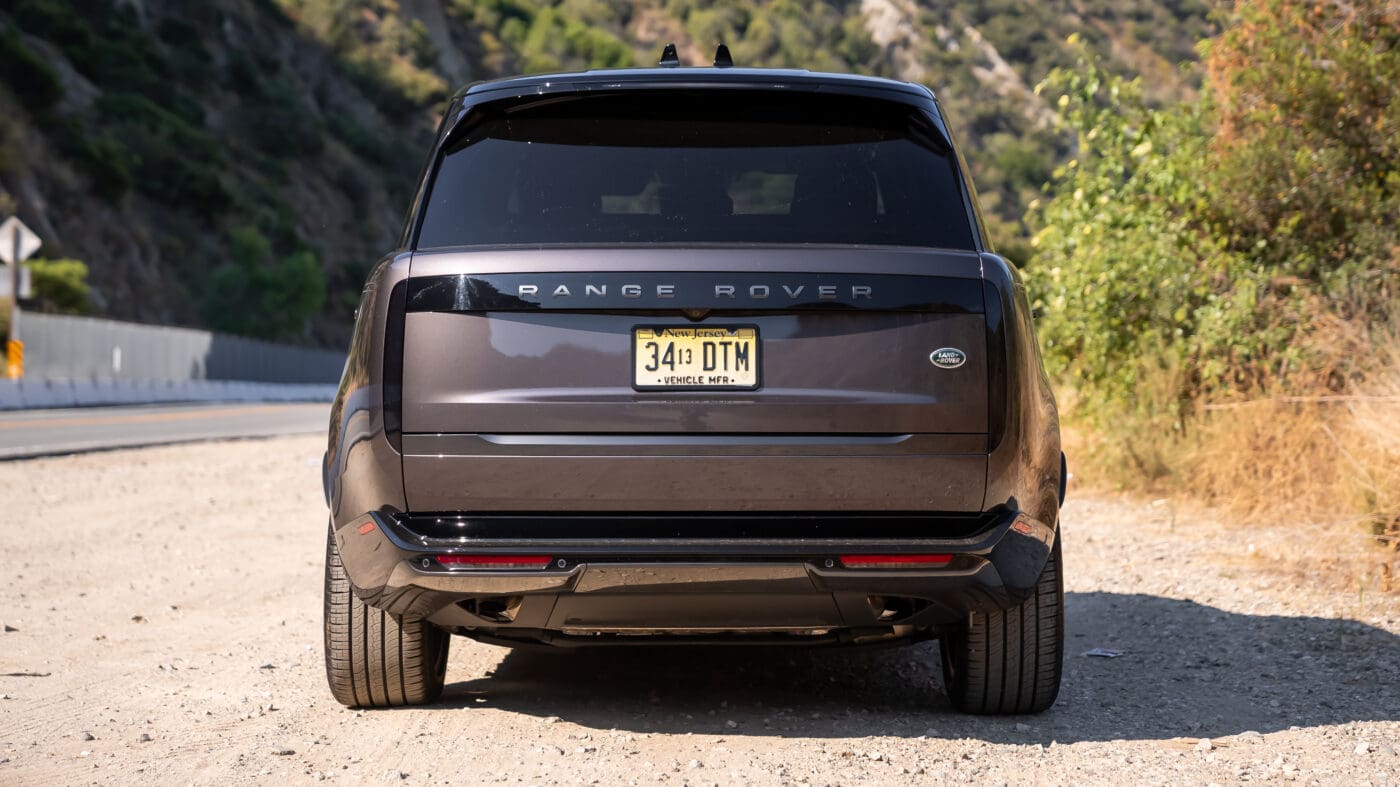
My P400 SE tester featured a 3.0-liter turbocharged and supercharged inline-six, a carryover from the outgoing model, developing 395 hp and 406 ft-lb. Despite this SUV’s hefty 5,240-pound curb weight, its twin-charged powerplant never struggled to push it off the line quickly and quietly. Although it lacks the V8’s powerful low-end torque output, it seemed perfectly at home under the L460’s hood and responsive even when cruising at high speeds.
It pairs with a quick-shifting eight-speed torque converter automatic and a standard all-wheel-drive system. A dial on its center console allows you to quickly set up its AWD mode and suspension stiffness independently or combined in one of multiple preselected configurations.
The biggest differentiator between the L405 and the L460’s driving experience comes down to its standard fully independent air suspension. By separating all four wheels, road imperfections felt by one won’t affect the others, while a new Adaptive Dynamics software constantly adjusts dampening. The result is an SUV that glides over cratered streets in a way most capable off-roaders can’t.
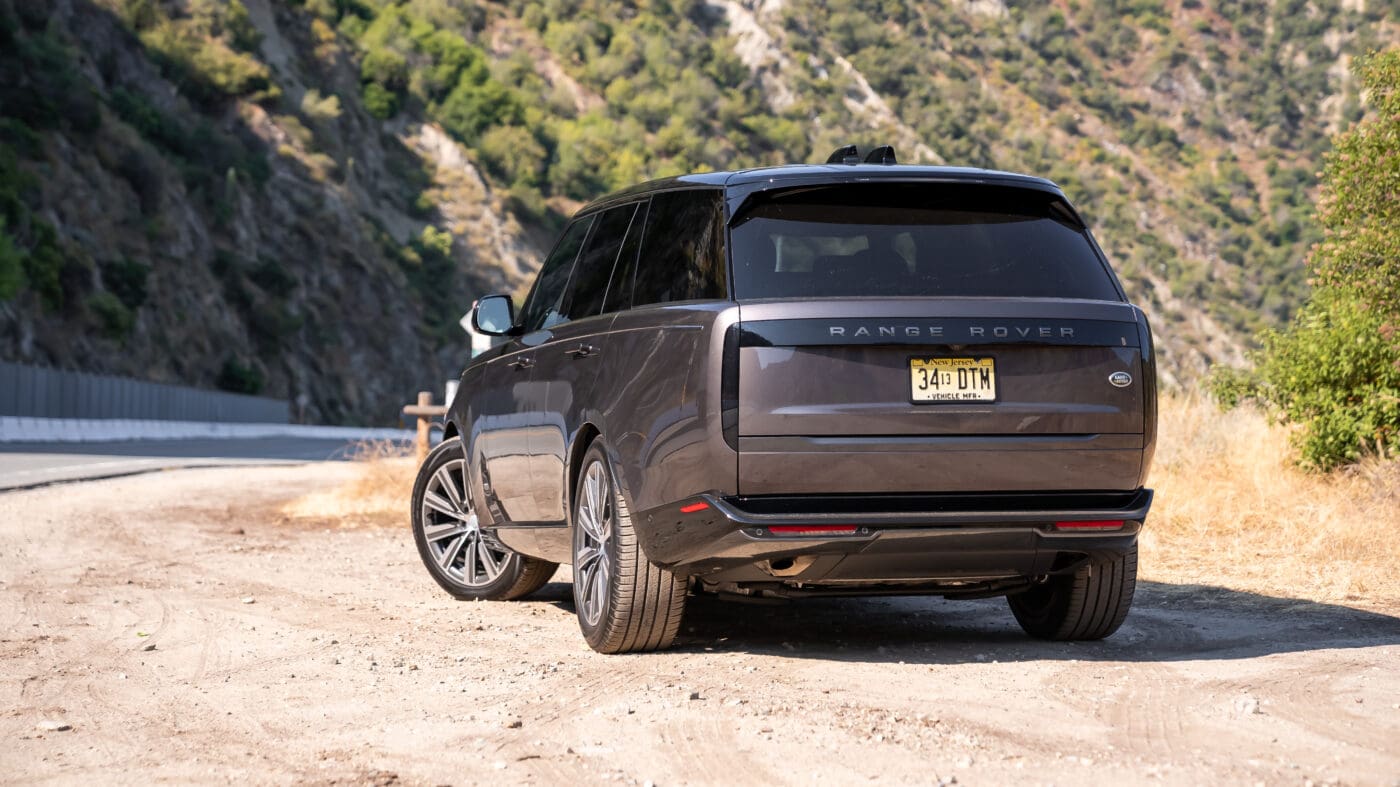
Supporting its new air shocks is a 48-volt electronic active anti-roll bar system dubbed Dynamic Response Pro, which successfully decreases unwanted body roll. And while it doesn’t make the Rover handle like a sports car, it’s more stable than you’d expect a high-riding, cushy SUV to be.
As has become an industry trend recently, the L460 gets a standard rear-axle steering system, significantly improving its maneuverability at lower speeds. That said, the rear turns in quickly and aggressively, leading to quite a bit of movement from the back, which can sometimes be unsettling.
One thing that repeatedly stood out during my week on the road was just how well-calibrated its inputs were. Its steering, for example, although not talkative, was light and effortlessly easy, further adding to its ease of maneuverability. It was a similar story with its brakes, which gripped progressively, making coming to a smooth stop an effortless exercise.
Like with its styling, this latest Range Rover doesn’t redefine its driving experience, combining multiple incremental improvements that result in a vastly improved overall product.
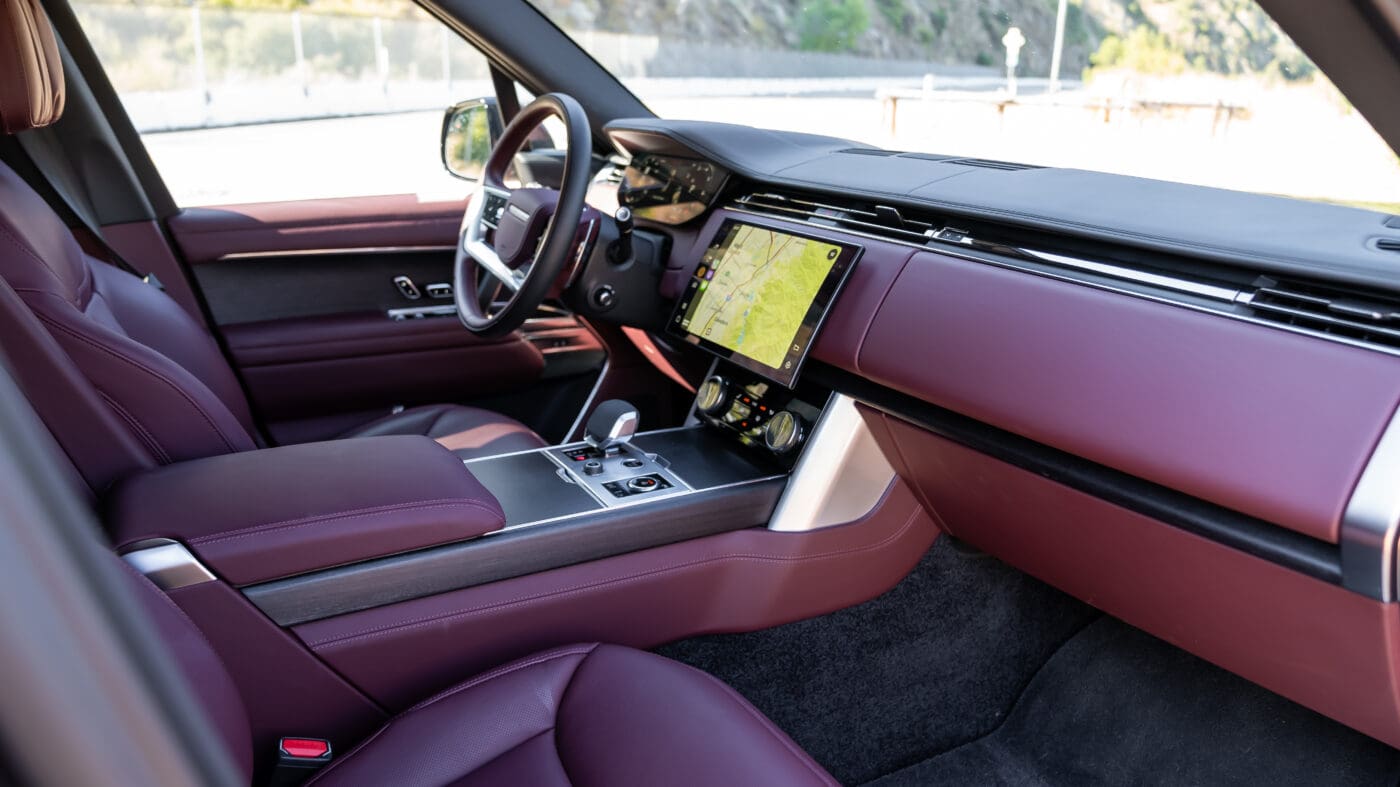
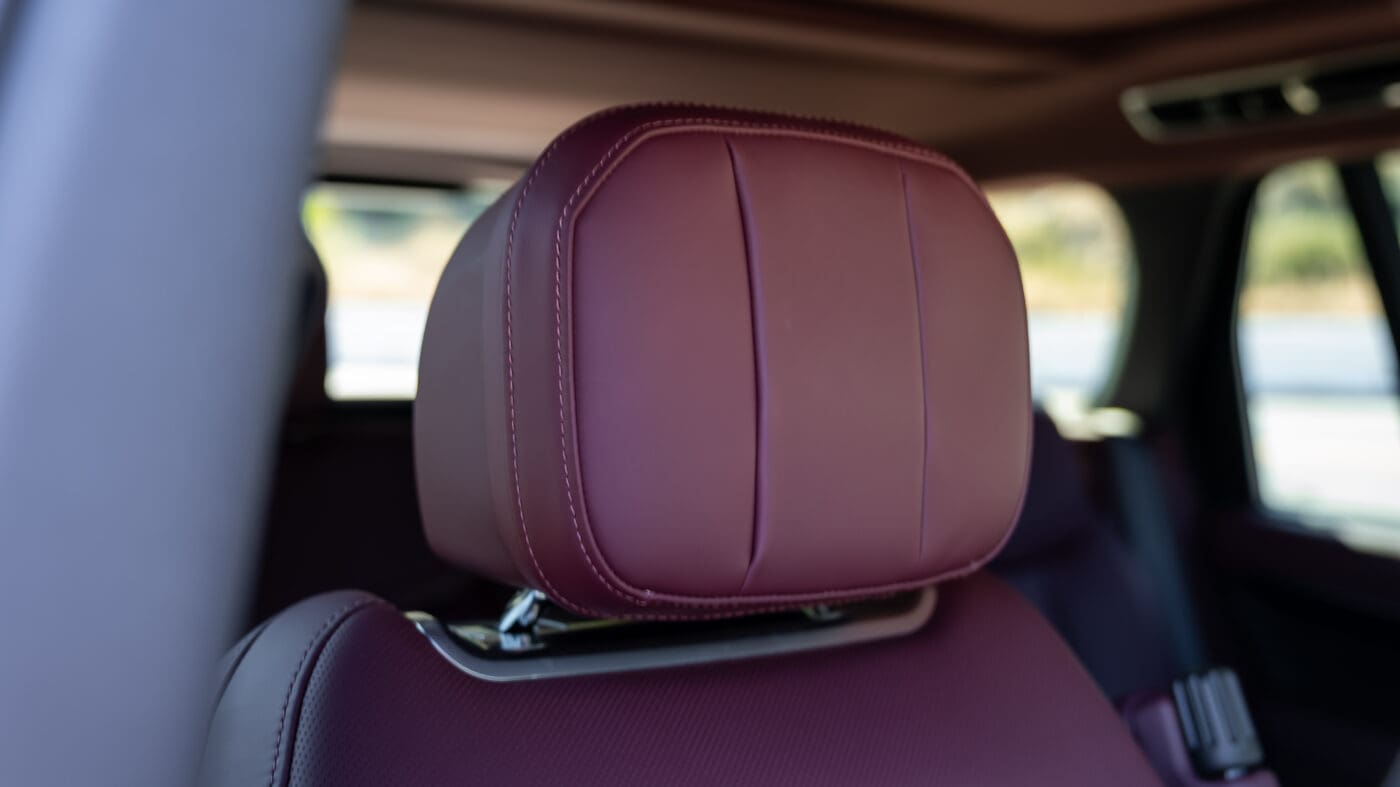
An Upmarket Push
This theme continues as you step inside. The L460 counts on a fairly straightforward cabin layout. Like most competitors, it combines a 13.7-inch digital instrument cluster with a 13.1-inch infotainment screen. And like its rivals, Land Rover’s latest Pivi Pro system reduces the need for physical buttons by allowing the driver to adjust almost anything from the central display.
Land Rover thankfully left the physical A/C controls in place, which, coupled with the lack of buttons, yielded a very modern and minimal cabin layout. When looking at higher trims like the Autobiography or SV, Land Rover now offers more finishes and materials than ever, trims implemented due to rising customer demand for more customization options.
As such, a Range Rover may start at just over $100,000 but can now be configured to well over double that figure given its extended options list, bringing it closer in line with the Mercedes-Maybach GLS and Bentley Bentayga.
Despite my P400 SE technically being the “entry-level” Rover, it was fitted with must-haves like the $2,000 Premium Leather Upgrade, $2,200 Hot Climate Pack, and $2,000 Technology Pack. These and many others contributed to an excellent cabin experience on long rides.
Its aforementioned air suspension couples with cozy but not overly plush adjustable cooled and heated seats and excellent sound isolation. While Range Rovers have always been quiet machines inside, the fifth-gen model takes this to a new level, ideally in line with the luxury competitors it’s shooting for.

Pricing
Given the Range Rover’s multiple available configurations, its price point varies drastically. My SWB P400 SE tester starts at $107,975, including a $1,475 destination fee, while its as-tested Price creeps up to $129,925, given some of the abovementioned options.
At the higher end, the SWB Autobiography starts at $159,095, including destination, while the range-topping SWB SV comes in at $194,575. Springing for a LWB model or LWB with seven seats raises these prices further while still falling in line with other luxury competitors.
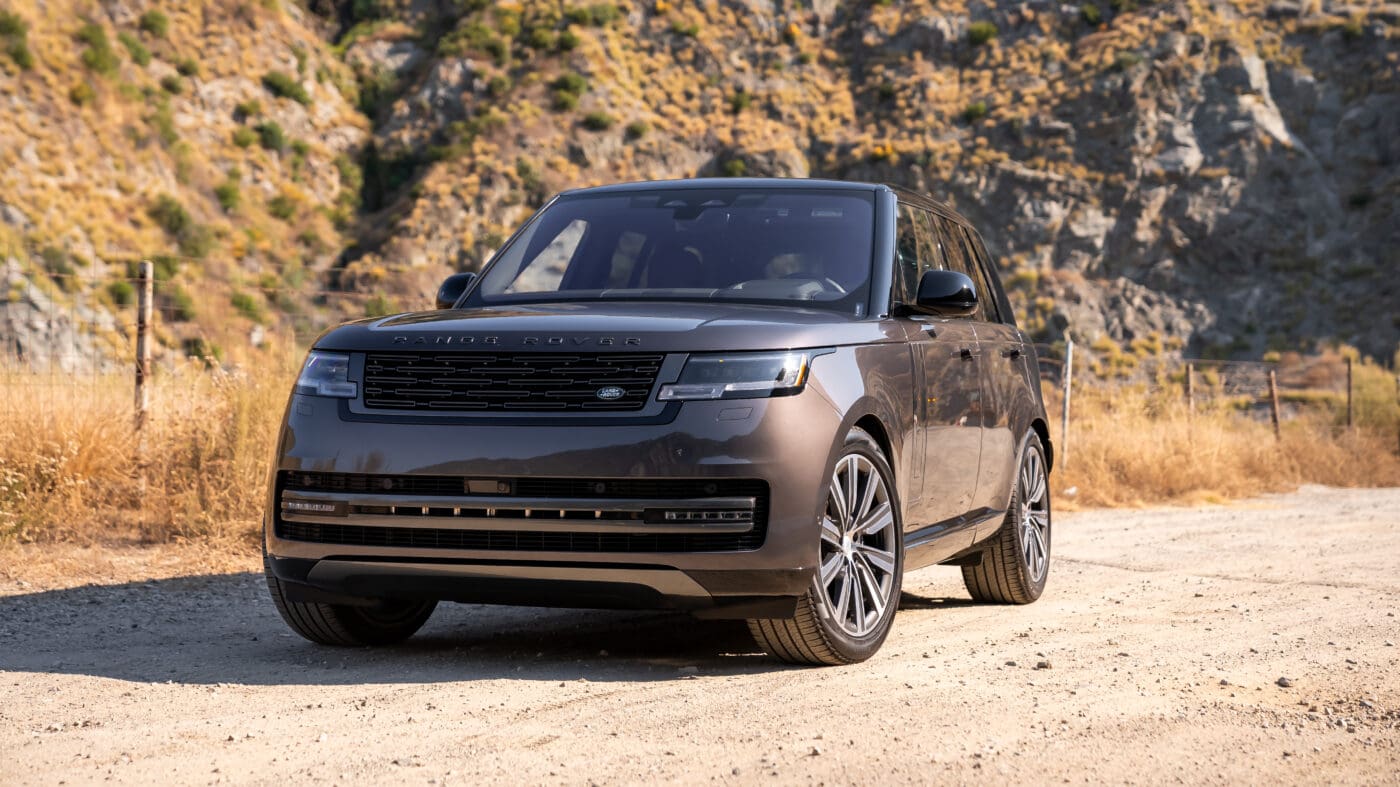
The 2023 Range Rover’s improvements are primarily evolutionary. From its sleek exterior styling to its minimal cabin and familiar powertrain options, this latest model doesn’t immediately come across as drastically different than its predecessor.
Interact with it, however, and its subtle improvements quickly add up. Its cabin is now quieter, its ride plusher, and its interior details more dialed in than ever. While this latest Range Rover will feel quite familiar to brand loyalists, Land Rover’s choice to build on what defines a Range Rover in the first place is how you meaningfully improve such an established model.

